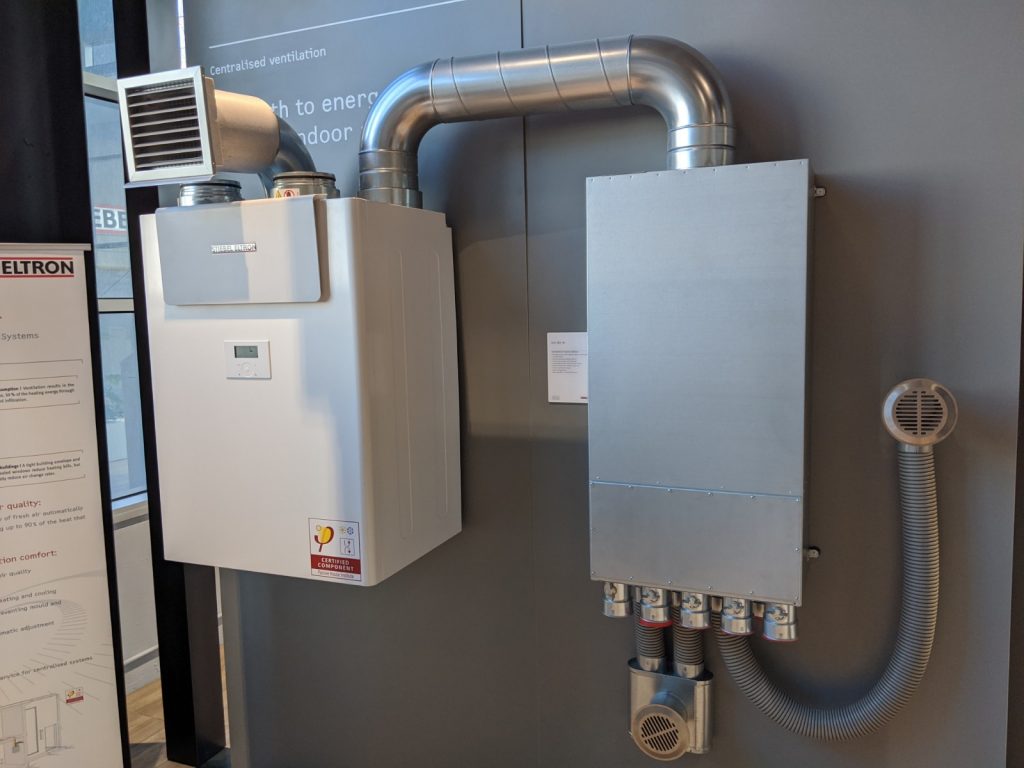Exploring the Benefits of Heat Recovery Ventilation for Power Effectiveness in Homes
Heat Recovery Ventilation (HRV) systems use house owners a sensible approach to improving power performance. By redeeming warm from outbound air, these systems can substantially reduce heating & cooling expenses. In addition, they supply a steady supply of fresh air, enhancing indoor air top quality and convenience levels. As homeowners take into consideration sustainable options, recognizing the nuances of HRV systems ends up being increasingly crucial. What elements should one evaluate prior to making such a financial investment?
Recognizing Heat Recovery Ventilation Solutions

Exactly How HRV Enhances Indoor Air High Quality

Energy Financial Savings: The Economic Benefits of HRV
Making the most of power effectiveness, heat recovery ventilation (HRV) systems provide considerable monetary advantages for house owners. By recovering and recycling warm from exhaust air, HRVs significantly minimize heating & cooling costs. This innovation can cause energy savings of as much as 30%, depending upon climate and usage patterns. Property owners typically observe reduced utility bills shortly after installment, making HRVs a monetarily sensible financial investment in time. Furthermore, many regions provide motivations or rebates for energy-efficient upgrades, additionally improving the financial appeal. As power prices proceed to increase, the cost-effectiveness of HRVs becomes increasingly clear. On the whole, the consolidation of HRV systems not only advertises energy efficiency however likewise contributes to lasting monetary click here to find out more cost savings for families.
The Environmental Effect of Heat Recovery Ventilation
A considerable ecological benefit of heat recovery ventilation (HRV) systems hinges on their ability to decrease general power usage. By recovering warmth from exhaust air and moving it to inbound fresh air, HRV systems minimize the need for energy-intensive home heating and cooling down methods. This decrease in power need adds to lower greenhouse gas exhausts, as less fossil fuel is needed to keep comfy interior temperature levels. Additionally, HRV systems boost indoor air high quality by efficiently exchanging stagnant air with fresh exterior air, reducing dependence on mechanical air conditioning systems that can damage the atmosphere. Generally, the application of HRV systems supports lasting living practices and lines up with worldwide efforts to fight environment adjustment by advertising power effectiveness in property setups.
Picking the Right HRV System for Your Home
How can house owners assure they pick the appropriate heat recovery ventilation (HRV) system for their requirements? Initially, they need to evaluate their home's size and design, as these aspects influence air flow demands. Next off, examining the system's efficiency rankings is essential, as greater scores suggest better performance and power cost savings. House owners must likewise think about installation and upkeep prices, comparing different brand names and designs for value. In addition, it is necessary to examine sound degrees, you can try here as some systems operate even more silently than others. Consulting with a/c experts can offer customized referrals based on specific home problems. Lastly, examining customer evaluations and guarantees can aid in making an informed decision, making certain that the picked HRV system effectively boosts interior air top quality and energy efficiency.
Regularly Asked Questions

Just how Frequently Should I Tidy or Maintain My HRV System?
The regularity of cleaning or keeping a warm recovery ventilation (HRV) system generally relies on usage and ecological variables. Generally, it is a good idea to do maintenance every six months to assure peak efficiency and air quality.

Can HRV Equipments Help In Reducing Moisture Levels Indoors?
HRV systems can properly reduce interior moisture levels by exchanging stagnant, humid air with fresh, drier air from outdoors. HRV Heat Recovery Ventilation. This procedure assists preserve a well balanced indoor atmosphere, boosting convenience and preventing moisture-related concerns
What Is the Life-span of a Common HRV System?
The lifespan of a normal heat recovery ventilation (HRV) system differs, generally lasting between 10 to 15 years. Routine upkeep can expand its effectiveness and functional life, ensuring peak performance throughout its usage duration.
Exist Any Kind Of Noise Interest In HRV Equipments?
Sound worry about HRV systems can occur, especially from follower procedure. Many modern units are developed to minimize sound levels, ensuring they operate quietly while maintaining efficiency, which addresses potential disturbances in living atmospheres.
Can I Install an HRV System Myself, or Do I Required a Specialist?
The private contemplated whether to install the heat recovery ventilation (HRV) system directly or navigate to this website employ a specialist. Normally, while do it yourself setup is possible, competence guarantees correct functionality and compliance with regional building ordinance, boosting system efficiency.